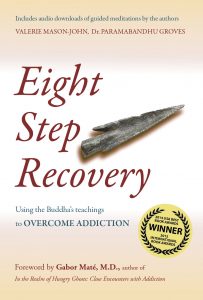26 Oct The Sting
Suffering is the beginning of the path.
What is suffering? It’s traditionally described as an ill fitting wheel on a chariot. I tend to think of a buckled wheel on my bicycle. It’s a bumpy unsatisfactory journey from A to B. However suffering can be an invitation for us to do the work.
The Buddha has done the work for us. All we need to do is practise. When the Prince became distressed at the sight of aging, sickness and death, he stepped onto the path. He was inspired by a mendicant who was radiating peace and begging for alms. With great energy, faith, meditation, concentration and wisdom, he found an end to suffering and laid out the map of the four noble truths and the eightfold path.
While these teachings may seem too much to take on, we can begin doing the work by turning towards the unpleasant. When we turn towards the unpleasant, it takes the longevity out of suffering.
However, many of us find it difficult to face the sting of unpleasantness. Somebody gives us feedback, and there is the sting of sensations arising in the body, if we face the unpleasantness that arises in the body, the stinger will dissolve with time.
When a bee stings us, the best thing we can do is turn towards the sting and pull the stinger out. We must do the same when we have been stung by an external or internal action. We must embrace the entire experience of the human condition.
If we turn away from the sensations in the body, the stinger will calcify and our suffering will multiply.
Turning away from the sting of unpleasantness is limited, because when we do, we are resisting our pain. Shinzen Young says Pain x Resistance = suffering. Our resistance is manifested in our choice of distractions.
In the short term, the bottle of booze, the line of coke, the shot of heroin, even the blast of rage, may seem to take the sting out of the unpleasant. And it does for a while, as we become numb, but once the effects have worn off our suffering has multiplied.
When we turn away from our experience of sensations it put us on the wheel of becoming, the wheel of cyclic existence, the wheel of life. This wheel is a traditional Buddhist teaching on birth, death and our existence in Samsara. Samsara being the total confusion and creation of our inner and external worlds.
At the hub of this wheel is the pig that represents ignorance (delusion). In India it was seen the pig slept in the dirtiest places and ate what ever was fed to it.
Some of us with addictions have slept in some the dirtiest or most dangerous places and have eaten what ever has been fed to us. And that includes dirty drugs, or drinking methylated spirits.
The pig chases the snake. The snake represents aversions/hatred. It’s said that snakes will strike or be aroused at the slightest of touch. Many of us are like this too, we can blow up at the slightest thing and live our life on edge. The snake chases the cock.
The cock represents attachment/greed. The cock is symbolic of those birds that are often attached to their partners. Those of us with addictions are attached to our choice of distraction.
The cock chases the pig, the pig chases the snake and the snake chases the cock, as if they were on a vicious cycle of suffering. They move around and around the hub chasing each others tails.
Every time we turn to our choice of distraction we become one of these creatures running around and around chasing our tails.
Liberation from the Wheel of Life does not mean escape, the Buddha implied. It means clear perception of oneself, of the entire range of the human experience.
Prince Siddhartha vowed to find an end of suffering. He did not vow to gain enlightenment. We must stop chasing enlightenment, those blissful highs, and turn towards our own suffering if we are to gain liberation.
Eight Step Recovery book, is an opportunity to step onto the path
I will be delivering an online Mindfulness Based Addiction Recovery course during the month of January 2018. For people in recovery and people working in the field of recovery. For more information please email mark@wildmind.org




